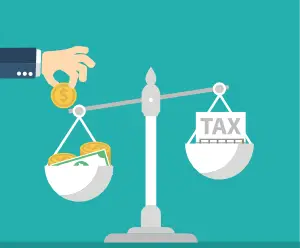
Understanding the IRS Substitute for Return
Click to ask Mike Ask Mike The Internal Revenue Service (IRS) Substitute for Return (SFR) is a term many taxpayers

The Internal Revenue Service (IRS) operates within specific timeframes dictated by statutes of limitations when it comes to assessing, refunding, or collecting taxes. These limitations play a pivotal role in the taxation process, shaping the rights and obligations of taxpayers. In this article, we’ll explore the intricacies of IRS statute of limitations, covering the types, implications, and how they impact taxpayers’ interactions with the IRS.
Understanding IRS Statute of Limitations:
A statute of limitations is a legal principle that establishes the maximum time after an event within which legal action can be taken. For the IRS, statutes of limitations delineate the timeframe during which certain actions related to tax matters can be initiated or pursued. Let’s delve into the three main types of IRS statute of limitations and their implications:
Understanding the nuances of ASED is crucial for taxpayers, as it delineates the period during which the IRS can scrutinize and potentially adjust tax liabilities for a given tax year.
Conclusion:
Navigating IRS statute of limitations is essential for taxpayers to understand their rights and obligations concerning tax matters. By comprehending the nuances of ASED, RSED, and CSED, taxpayers can effectively manage their tax liabilities, ensure compliance with IRS regulations, and safeguard their entitlements to refunds or credits. It’s imperative for taxpayers to stay informed about statute of limitations and seek professional assistance when needed to address any complexities or uncertainties related to tax matters. By leveraging this knowledge, taxpayers can navigate their interactions with the IRS confidently and proactively manage their tax obligations.
You can now ask our AI assistant any questions you have about your tax debt or any tax-related issues. Whether you’re unsure about payment plans, need clarification on penalties, or want information on how to resolve your tax situation. Our AI is ready to assist you with all your tax-related concerns.

By interacting with our AI assistance, you agree to our terms & conditions. Enjoy our AI Tax Assistant responsibly.
Ask me any questions...
Related Posts

Click to ask Mike Ask Mike The Internal Revenue Service (IRS) Substitute for Return (SFR) is a term many taxpayers

Click to ask Mike Ask Mike The Internal Revenue Service (IRS) Substitute for Return (SFR) is a term many taxpayers

Click to ask Mike Ask Mike The Internal Revenue Service typically operates within a 10-year window, commencing from the

Click to ask Mike Ask Mike understanding the ins and outs of the 10-year statute of limitations (SOL) is essential.

Click to ask Mike Ask Mike Entering into an Installment Agreement (IA) with the IRS can provide much-needed relief for
Recent Posts

Click to ask Mike Ask Mike The Internal Revenue Service (IRS) Substitute for Return (SFR) is a term many taxpayers

Click to ask Mike Ask Mike The Internal Revenue Service (IRS) Substitute for Return (SFR) is a term many taxpayers

Click to ask Mike Ask Mike The Internal Revenue Service typically operates within a 10-year window, commencing from the

Click to ask Mike Ask Mike The Internal Revenue Service (IRS) operates within specific timeframes dictated by statutes of limitations

Click to ask Mike Ask Mike understanding the ins and outs of the 10-year statute of limitations (SOL) is essential.
Disclaimer: This is educational content, not legal, accounting, or tax advice.
This is a tax debt resource website, not to be used in lieu of a tax attorney or for legal advice. All information, Ai chat responses, articles, materials, and content are intended to inform users on a variety of tax topics. In no way is it intended to be construed as accounting, legal, tax, other services or advice. This site is not intended to be used to avoid tax penalties or tax debt that may be imposed by law. Terms and Conditions. Your use of this site constitutes acceptance of the following terms and conditions.
This is a tax debt resource website, not to be used in lieu of a tax attorney or for legal advice. All information, Ai chat responses, articles, materials, and content are intended to inform users on a variety of tax topics. In no way is it intended to be construed as accounting, legal, tax, other services or advice. This site is not intended to be used to avoid tax penalties or tax debt that may be imposed by law. Terms and Conditions. Your use of this site constitutes acceptance of the following terms and conditions.
© 2023 · Tax Debt Monster, Inc. All rights reserved

For all Tax Professionals that would like to partner up with us. By partnering with us, you’ll help us connect and make a positive impact in the tax community. Partner up with us and receive a complimentary Ai Tax Sidekick to help support your clients at no cost! Click here if you’re interested in our Partner-Up program

By interacting with our AI assistance, you agree to our terms & conditions. Enjoy our AI Tax Assistant responsibly.
How may I help you with your tax issue?